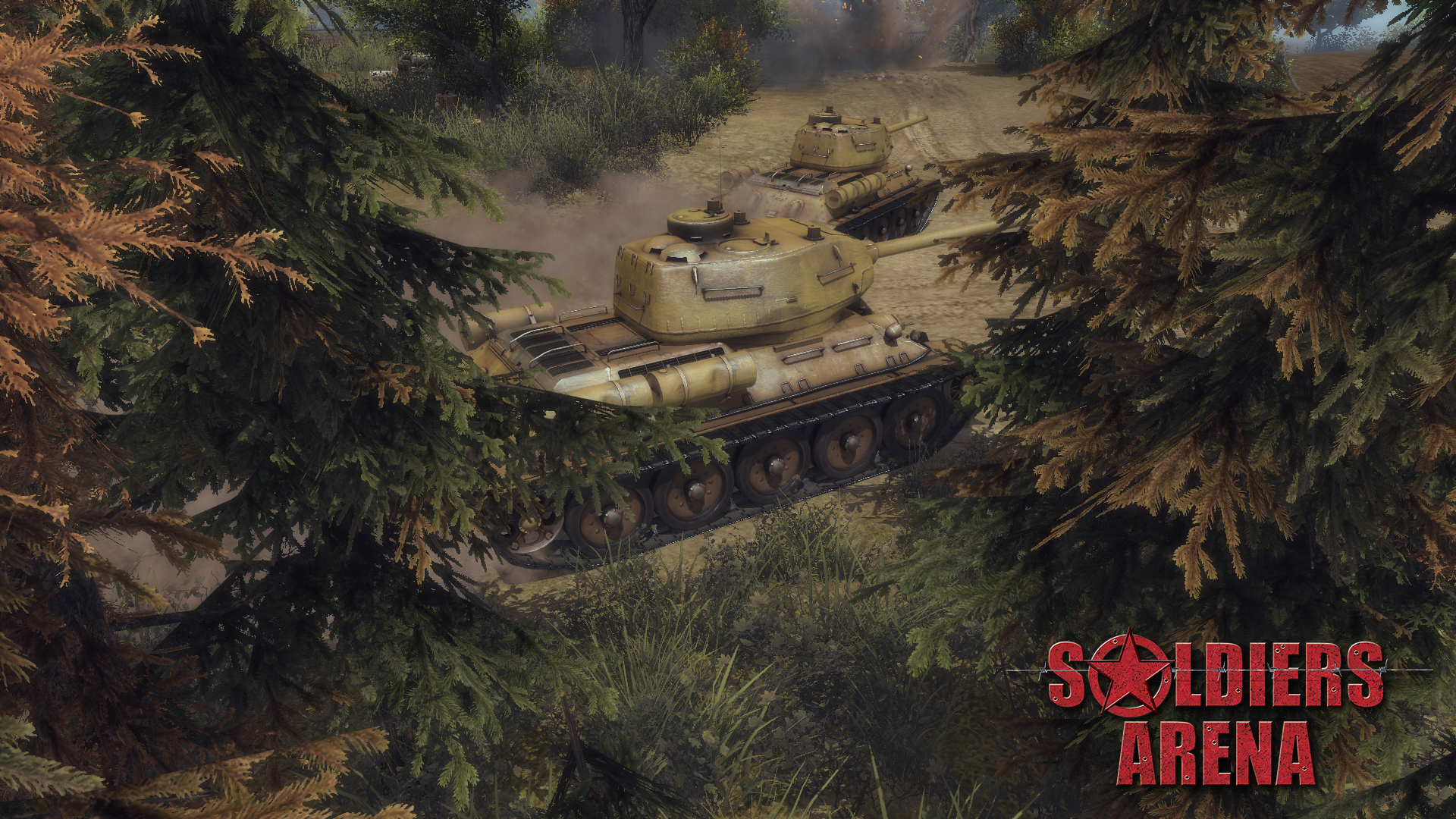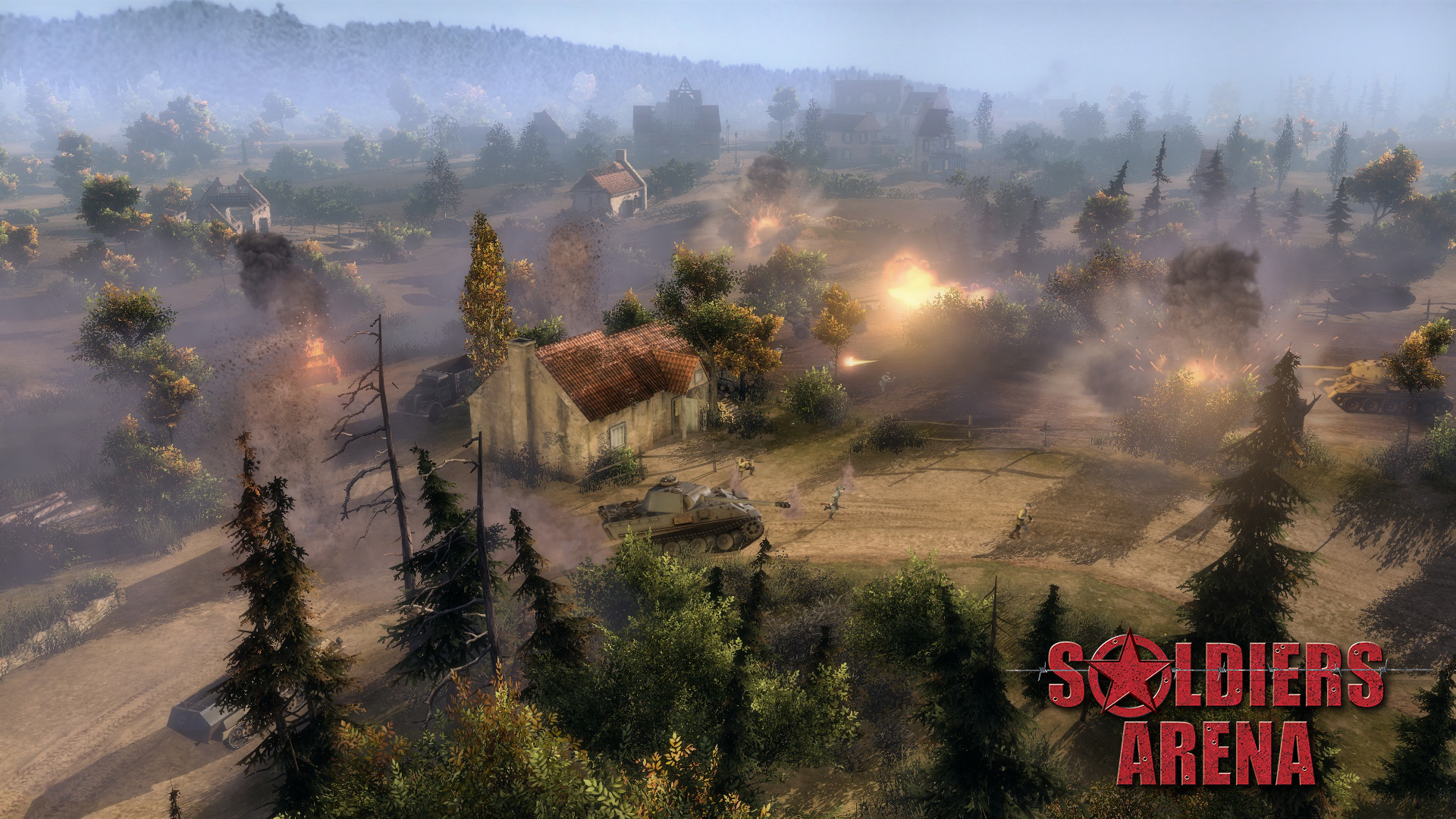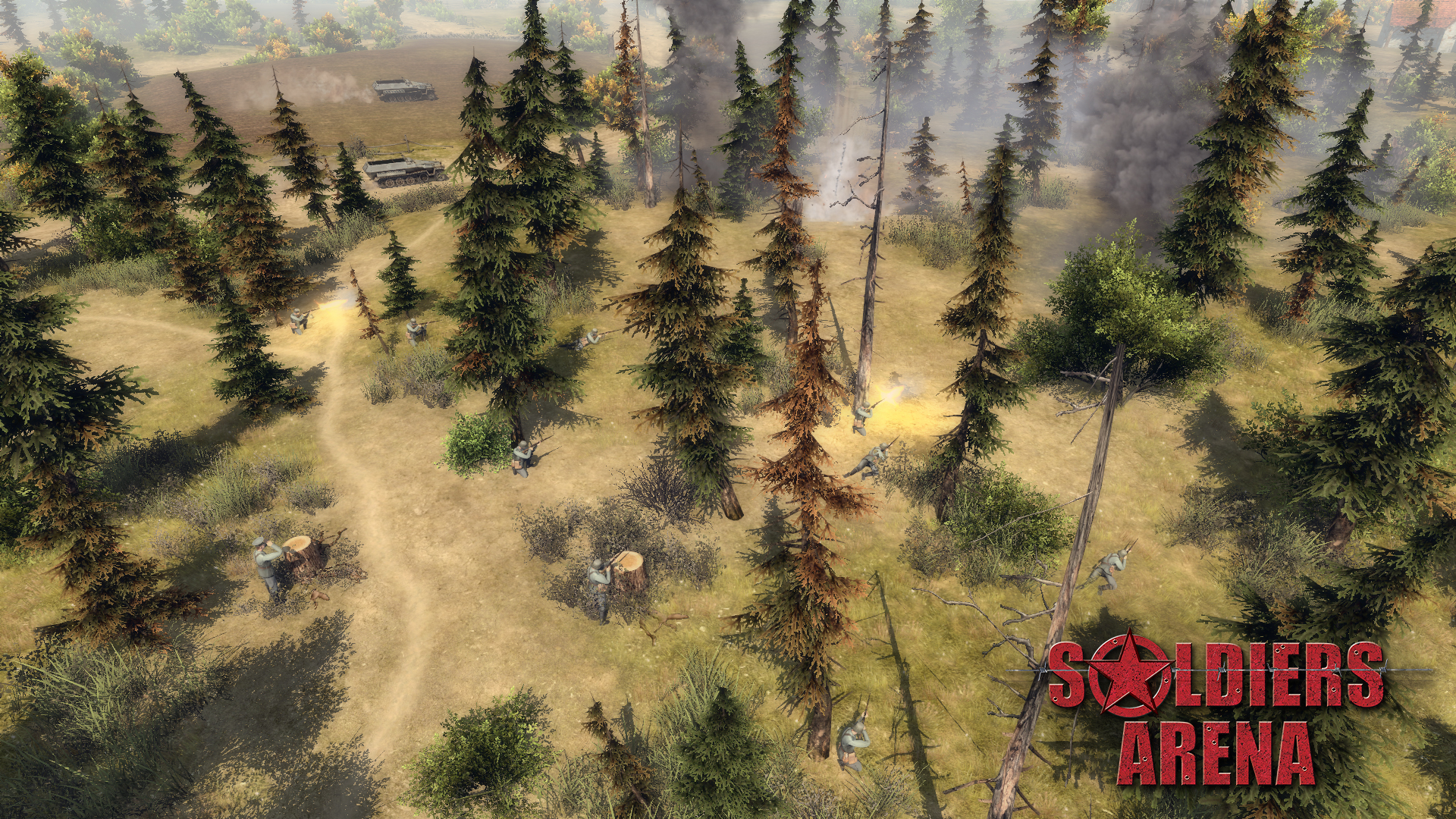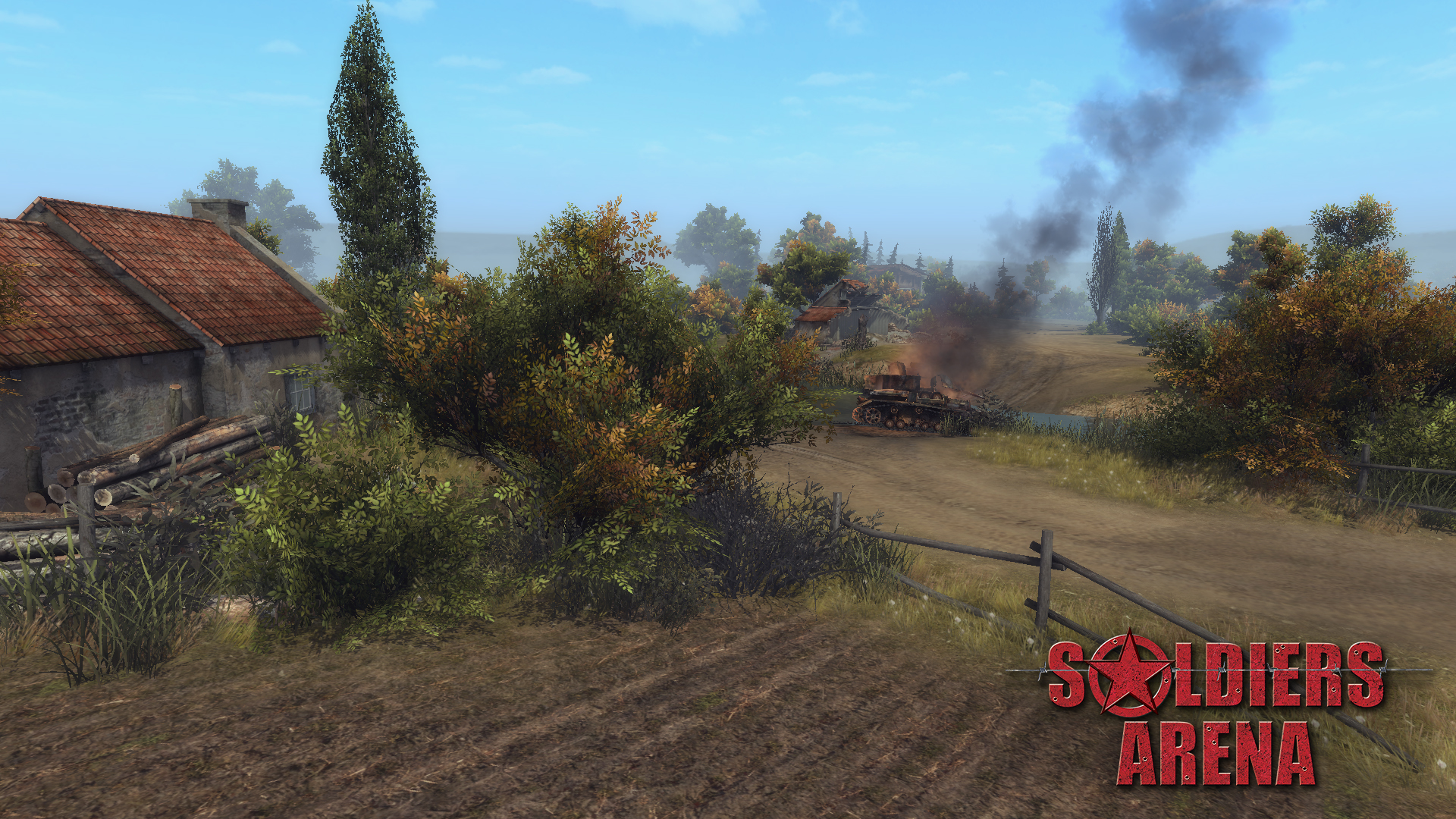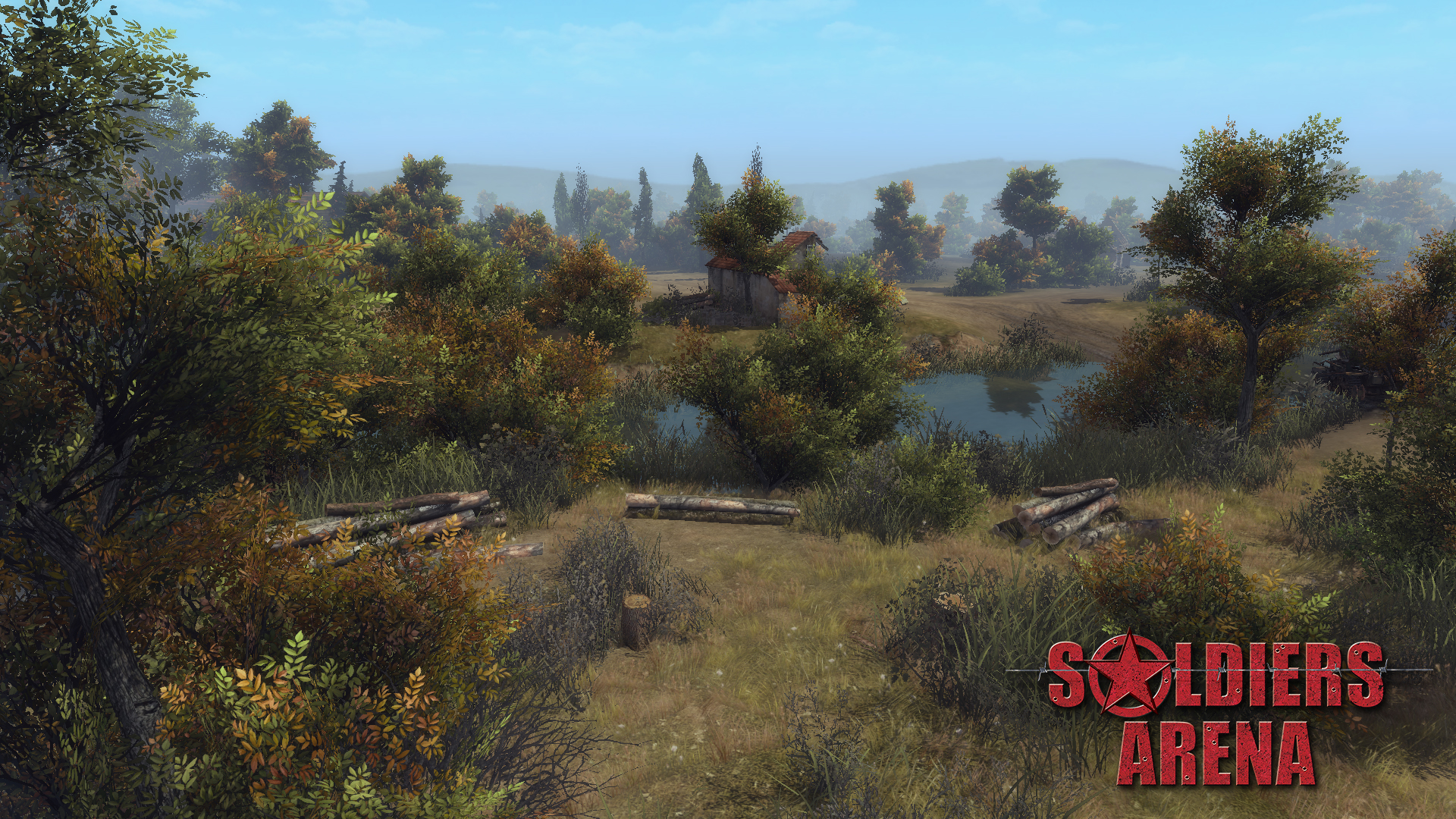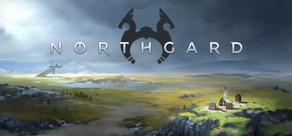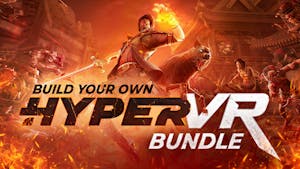Soldiers: Arena will take you to the battlefields driven by the largest and bloodiest conflict of all time - World War II. This is the height of war, this is the time for real heroes.
Both new and already battle-proven multiplayer gamemodes to the original tactical gameplay are waiting for you. Interactive destructible environments and the ability to direct-control any combat unit. Steam support: matchmaking, workshop, steamcloud. Redesigned graphics, models and special effects. Conceptual new interface and convenient control, new battlefields and new opportunities.
Both new and already battle-proven multiplayer gamemodes to the original tactical gameplay are waiting for you. Interactive destructible environments and the ability to direct-control any combat unit. Steam support: matchmaking, workshop, steamcloud. Redesigned graphics, models and special effects. Conceptual new interface and convenient control, new battlefields and new opportunities.
Features:
- Revival of the “Men of War/Soldiers” game series. This multiplayer tactical RTS absorbed the best of the original series, favourite of players all over the world.
- Huge roster of units. Within a single game session, players will have access to a large number of unique units for every nation: tanks, vehicles, infantry and artillery of various types.
- The “Direct Control” mode. This mode provides the ability to play from the third person for any unit in the player’s army. The movement of the unit, firing the various guns, control of ammunition types, etc. all relying and directly controlled by player and thus the game conveys tactical action in it’s very essence.
- Destructible interactive environments. During the battle almost any object of the game can be destroyed or set on fire. Furthermore, all objects, including craters from explosions, may be used as cover.
- Atmosphere and realism. Even in large-scale game battles, it is necessary to take into account factors such as the supply of fuel and ammunition of each single unit. The precense of inventories for each unit limits the number and size of transported objects. Guns’ accuracy and penetration decreases with distance. Tired soldiers reduce the movement speed during long crossings. The influence of these and many other factors makes possible to reproduce the battles of World War II with a adequate degree of realism, most involving the player into the atmosphere of heated battles of the past.
- Modular realistic damage system. Any vehicle, regardless of its type, is composed of a set of modules that can be broken or destroyed. Types of ammunition, characteristics of guns, shooting distance, angle of armor, armor plate thickness and the threshold of material fatigue are taken into account, when calculating the piercing capability and damage caused to each of the component. Additionally, there are calculations of the probability of detonation of ammunition, engine fires, damage to wheels or tracks (which leads to immobilization of combat units). If a component is not destroyed, it can be repaired.
- Wide range of opportunities for infantry. Intelligence, combat, capture and repair of equipment, installation of anti-personnel and anti-tank obstacules of different types, construction of protective structures, health treatment, cover usage, ability to change through primary and secondary weapons, capture of buildings and territories.
- Great number of different types of weapons and ammunition. Pistols, submachine guns, machine guns, rifles and carbines, various types of grenades, dynamite, mines, knives and other items of equipment that are unique to each nation.
- Advanced Artificial Intelligence (Advanced AI). Infantry’s behaviour based on the feedback information from their own sensors (vision and acoustics), as well as allies’ signals. This allows the use of diversionary tactics, sending scouts into the enemy's rear, as well as to open the visibility with the help of special devices - observation towers, binoculars, telescopic tubes and sniper scopes. The morale of the infantry depends on the balance of forces on the battlefield - the soldiers may decide to advance or to withdraw from the fight.
- Conceptual new interface for convenient control.
- Enhanced game engine Gem2. Reworking of the game engine allows to provide a new level of graphics, the implementation of new and improvement already familiar to users game mechanics.
- OSX, Mac. Linux support.
- Full Steam support. Matchmaking, workshop, steamcloud, tradecards, achievments, steamstats, inventoryitems.
DevDiaries #47: All you want to know about infantry but are afraid to ask
We also often write that we want to reflect in the game the real behavior and cooperations of the armies in real combat. Maybe even too often. But what to do, if it is an idee fixe for our team? If someone could look at falling asleep game designers, he would see how their lips moved, repeating: troops behavior, teamplay, competitiveness, skill-oriented, variability. And all of the above we are trying to reflect in the infantry gameplay.
That’s how, for example, the Infantry tactical manual of the Red Army (1942 edition) describes the main tasks of the infantry:
- in offensive combat, - skillfully combining fire and movement, approach the enemy, attack it, destroy it in hand-to-hand combat or capture, and secure the captured territory;
- in a defensive combat - by powerful and accurate fire and resolute counterattacks to repel attacks by enemy infantry and tanks, inflict heavy losses on him and retain the defended terrain.
[img] https://puu.sh/xFqOM/06244caf50.jpg [/img]
In the game, the infantry commander performs all the above tasks and some others, considering that in his submission there are still sabotage, reconnaissance, engineering detachments, etc. The infantry have a lot to do, because it is applicable to ANY task in the game. The main thing is to choose the right squad for the right task. The statement ‘the land is not considered liberated or conquered until the infantryman set his foot there’, in Soldiers: Arena is literally reflected. Infantry is the best for occupying territories, but as for the fortifications, buildings, trenches and previously freed from enemies, cannons and vehicles - it is exclusively infantry that can do that. However, it would be strange to control a cannon sitting in a tank ... In defense, the task of the infantry is to strengthen and entrench, to stop the enemy's attack, and in the worst case to hold out until the relief comes from allied artillery and tank units.
Infantry commanders are the most demanding of microcontrol and the gaming skill due to the greater number of units and their reduced survivability. We, of course, are working to improve AI and try to make the infantry smart, saving the player from unnecessary clicks as much as possible, but it won’t be able to win by itself. Infantry is always the first to take a blow, it is not protected by armor and is often in sight of the enemy. Its survival depends on you. Most likely the gap between a novice and an seasoned player will be most noticeable among the infantry commanders. Only your reaction, microcontrol skills and ability to read the game will determine whether your units will turn into ‘meat’ enemy troops, or become ‘meat’ themselves. Probably, it will be little bit of this and that.
[img] https://puu.sh/xFqOD/758361ab40.jpg [/img]
Now we have the basic, stormtrooper, motorized infantry, engineering and sabotage-reconnaissance infantry battalions in the game and each of them can force the enemy to ‘slow down’. At their disposal are four types of infantry: the base one (riflemen and submachine gunners), the support (miners, medics, engineers), special (spotters, scouts, saboteurs) and heavy (flamethrowers, grenade thrower, stormtroopers). Of course, in addition to infantry, commanders have a number of slots for support cannons and armored vehicles. Each of the commanders is strong in its own way and has different priorities in the battle. But also some restrictions on the types and the number of units in submission. Choosing a commander, you actually choose what type of infantry he will have more of, and which of the ‘elite’ units he can use.
For example, a basic commander is needed in order to give you a feel for the infantry gameplay before choosing a specialization. He does not have some actual accents in the development, but a little of everything. The engineering battalion has a defensive specialization, so he has the most slots for support infantry. He can create a deeply echeloned defense faster than others, and in the future will receive mechanized engineering units capable of evacuating damaged and unmanned vehicles in the rear. But with a clear advantage in defense, such a commander will be very inferior in attacking, especially in comparison to the stormtrooper and motorized infantry battalions. In turn, the motorized infantry commander has very few special units, less base infantry and absolutely no support cannons, but he compensates these shortcomings with his mobility and the availability of specialized armored cars that are inaccessible to other battalions. A fire-flame armored vehicle is worth a lot! The reconnaissance-sabotage battalion spends most of the time behind the enemy lines, therefore, it hardly has heavy infantry. But it has elite snipers, scouts and saboteurs, which are kept stealthy until the unit penetrates half of the line of sight distance. And, most importantly, the opportunity to drop the paratroopers to any point on the map and create a zone of increased unrest there.
[img] https://puu.sh/xFqOP/4636491fcf.jpg [/img]
Despite the fact that the main purpose of infantry is to fight for territory, there are lots of tactics and ways to achieve this purpose. To be effective in combat, you need to consider which commanders are playing against you, which ones in your team; which front line breakthrough you need to react and which one to ignore; where the enemy attacks, and where it tests you for strength. You can, while playing for a basic or engineering commander, try to ensure the presence of your team at the maximum length of the front line and control every building and dig out every possible trench, react to each appearance of the light enemy vehicles and saboteurs, stopping them and defending allied artillery. Or you can organize small detachments along the front lines, lead enemy light tanks into ambushes and do everything to exhaust the opponent. You can play through fast rushes with motorized infantry or assault battalions. Break through the sectors of the front that are least defended, trying to move as far as possible to pull the enemy's forces into this area and later retreat when further efforts will lead to unbearable losses. Or you can fill the armored car with submachine gunners and AT-gunners, to go as deep as possible into the enemy territory, to occupy the buildings there and hold ground until the last fighter, showing the position of enemy cannons, distracting the foe from the place of the main attack and keeping the opponent in constant tension. And how many more tactics will you have to invent, my friend, to emphasize your unique style?
By the way, how do you feel about commander portraits? Did you notice the utter sad sight shining through the artilleryman? This is a strange coincidence, because the artist was not aware of suffering memes. If this post gets at least modest 150 likes - it will be a sign that you are interested in seeing portraits of a sapper, a sniper and a medic. And we will post them without delay. As usual, we wish you the best!
[img] https://puu.sh/xFqOk/063ad03e53.png [/img]
Hi, friends.
We noticed that much more often we write about changes in artillery and tank gameplay, but much less often about infantry. Which is quite strange, because in battle it’s the infantry who suffers most but still does most acts of bravery. So in our games, it has always kept an honorable place, and Soldiers: Arena is no exception.
Teamwork is essential, it gives them someone else to shoot at.
We also often write that we want to reflect in the game the real behavior and cooperations of the armies in real combat. Maybe even too often. But what to do, if it is an idee fixe for our team? If someone could look at falling asleep game designers, he would see how their lips moved, repeating: troops behavior, teamplay, competitiveness, skill-oriented, variability. And all of the above we are trying to reflect in the infantry gameplay.
That’s how, for example, the Infantry tactical manual of the Red Army (1942 edition) describes the main tasks of the infantry:
- in offensive combat, - skillfully combining fire and movement, approach the enemy, attack it, destroy it in hand-to-hand combat or capture, and secure the captured territory;
- in a defensive combat - by powerful and accurate fire and resolute counterattacks to repel attacks by enemy infantry and tanks, inflict heavy losses on him and retain the defended terrain.
[img] https://puu.sh/xFqOM/06244caf50.jpg [/img]
In the game, the infantry commander performs all the above tasks and some others, considering that in his submission there are still sabotage, reconnaissance, engineering detachments, etc. The infantry have a lot to do, because it is applicable to ANY task in the game. The main thing is to choose the right squad for the right task. The statement ‘the land is not considered liberated or conquered until the infantryman set his foot there’, in Soldiers: Arena is literally reflected. Infantry is the best for occupying territories, but as for the fortifications, buildings, trenches and previously freed from enemies, cannons and vehicles - it is exclusively infantry that can do that. However, it would be strange to control a cannon sitting in a tank ... In defense, the task of the infantry is to strengthen and entrench, to stop the enemy's attack, and in the worst case to hold out until the relief comes from allied artillery and tank units.
Infantry commanders are the most demanding of microcontrol and the gaming skill due to the greater number of units and their reduced survivability. We, of course, are working to improve AI and try to make the infantry smart, saving the player from unnecessary clicks as much as possible, but it won’t be able to win by itself. Infantry is always the first to take a blow, it is not protected by armor and is often in sight of the enemy. Its survival depends on you. Most likely the gap between a novice and an seasoned player will be most noticeable among the infantry commanders. Only your reaction, microcontrol skills and ability to read the game will determine whether your units will turn into ‘meat’ enemy troops, or become ‘meat’ themselves. Probably, it will be little bit of this and that.
[img] https://puu.sh/xFqOD/758361ab40.jpg [/img]
A ‘sucking chest wound’ is nature's way of telling you to slow down.
Now we have the basic, stormtrooper, motorized infantry, engineering and sabotage-reconnaissance infantry battalions in the game and each of them can force the enemy to ‘slow down’. At their disposal are four types of infantry: the base one (riflemen and submachine gunners), the support (miners, medics, engineers), special (spotters, scouts, saboteurs) and heavy (flamethrowers, grenade thrower, stormtroopers). Of course, in addition to infantry, commanders have a number of slots for support cannons and armored vehicles. Each of the commanders is strong in its own way and has different priorities in the battle. But also some restrictions on the types and the number of units in submission. Choosing a commander, you actually choose what type of infantry he will have more of, and which of the ‘elite’ units he can use.
For example, a basic commander is needed in order to give you a feel for the infantry gameplay before choosing a specialization. He does not have some actual accents in the development, but a little of everything. The engineering battalion has a defensive specialization, so he has the most slots for support infantry. He can create a deeply echeloned defense faster than others, and in the future will receive mechanized engineering units capable of evacuating damaged and unmanned vehicles in the rear. But with a clear advantage in defense, such a commander will be very inferior in attacking, especially in comparison to the stormtrooper and motorized infantry battalions. In turn, the motorized infantry commander has very few special units, less base infantry and absolutely no support cannons, but he compensates these shortcomings with his mobility and the availability of specialized armored cars that are inaccessible to other battalions. A fire-flame armored vehicle is worth a lot! The reconnaissance-sabotage battalion spends most of the time behind the enemy lines, therefore, it hardly has heavy infantry. But it has elite snipers, scouts and saboteurs, which are kept stealthy until the unit penetrates half of the line of sight distance. And, most importantly, the opportunity to drop the paratroopers to any point on the map and create a zone of increased unrest there.
[img] https://puu.sh/xFqOP/4636491fcf.jpg [/img]
The enemy diversion you have been ignoring will be the main attack.
Despite the fact that the main purpose of infantry is to fight for territory, there are lots of tactics and ways to achieve this purpose. To be effective in combat, you need to consider which commanders are playing against you, which ones in your team; which front line breakthrough you need to react and which one to ignore; where the enemy attacks, and where it tests you for strength. You can, while playing for a basic or engineering commander, try to ensure the presence of your team at the maximum length of the front line and control every building and dig out every possible trench, react to each appearance of the light enemy vehicles and saboteurs, stopping them and defending allied artillery. Or you can organize small detachments along the front lines, lead enemy light tanks into ambushes and do everything to exhaust the opponent. You can play through fast rushes with motorized infantry or assault battalions. Break through the sectors of the front that are least defended, trying to move as far as possible to pull the enemy's forces into this area and later retreat when further efforts will lead to unbearable losses. Or you can fill the armored car with submachine gunners and AT-gunners, to go as deep as possible into the enemy territory, to occupy the buildings there and hold ground until the last fighter, showing the position of enemy cannons, distracting the foe from the place of the main attack and keeping the opponent in constant tension. And how many more tactics will you have to invent, my friend, to emphasize your unique style?
By the way, how do you feel about commander portraits? Did you notice the utter sad sight shining through the artilleryman? This is a strange coincidence, because the artist was not aware of suffering memes. If this post gets at least modest 150 likes - it will be a sign that you are interested in seeing portraits of a sapper, a sniper and a medic. And we will post them without delay. As usual, we wish you the best!
[ 2017-09-21 19:06:48 CET ] [Original Post]
Minimum Setup
- OS: Ubuntu 12.04
- Processor: 2 GHz Intel Dual CoreMemory: 4 GB RAM
- Memory: 4 GB RAM
- Graphics: 3D Hardware Accelerator Card Required - OpenGL 3.0 compatibleNetwork: Broadband Internet connection
- Storage: 5 GB available space
Recommended Setup
- OS: Ubuntu 15.04
- Processor: Intel Core i5-2.5GHzMemory: 8 GB RAM
- Graphics: NVIDIA GeForce GTX 560 or AMD Radeon HD 7750 with 1 GB VRAM or betterNetwork: Broadband Internet connection
- Storage: 5 GB available space
GAMEBILLET
[ 6376 ]
FANATICAL
[ 5865 ]
GAMERSGATE
[ 751 ]
MacGameStore
[ 2194 ]
FANATICAL BUNDLES
GMG BUNDLES
HUMBLE BUNDLES
INDIEGALA BUNDLES
by buying games/dlcs from affiliate links you are supporting tuxDB

